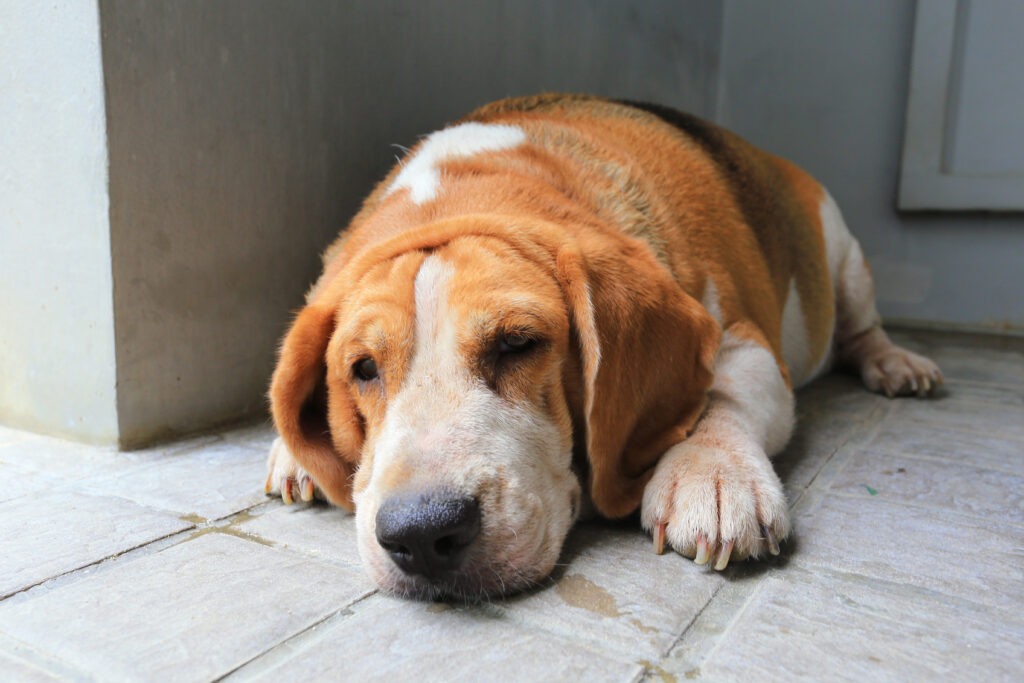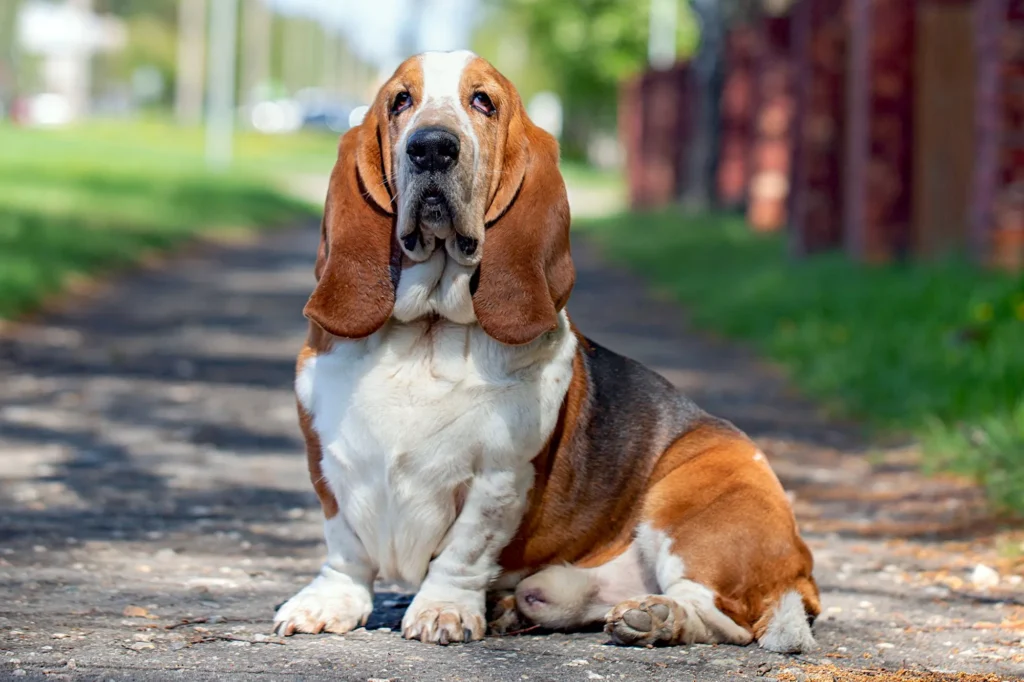Understanding the Importance of Maintaining a Healthy Weight for Dogs
As responsible pet owners, maintaining the optimal weight of our furry companions is crucial for their overall well-being. A healthy weight not only enhances their quality of life but also reduces the risk of various health issues. Just like humans, dogs can struggle with Dog Weight Loss, and it’s our duty to ensure they stay fit and active throughout their lives.
Excess weight in dogs can lead to a host of problems, including joint pain, respiratory difficulties, and an increased risk of chronic diseases such as diabetes and heart disease. By understanding the importance of maintaining a healthy weight, we can take proactive steps to keep our pups in the best possible shape.
READ ALSO : Unlocking Independence: A Guide to Teaching Your Dog to Use a Doggy Doorbell
Common Causes of Weight Gain in Dogs
Weight gain in dogs can be attributed to a variety of factors, including:
- Overfeeding: Providing our dogs with too many calories, either through their regular meals or frequent treats, can lead to unwanted weight gain.
- Lack of exercise: Insufficient physical activity can result in a decrease in calorie burn, leading to weight accumulation.
- Underlying medical conditions: Certain health issues, such as hypothyroidism or Cushing’s disease, can contribute to weight gain in dogs.
- Breed and age: Some dog breeds are more prone to weight gain, and older dogs may experience a slower metabolism, making them more susceptible to weight issues.
By identifying the potential causes of weight gain, we can develop a tailored plan to help our dogs achieve and maintain a healthy weight.
The Risks Associated with Overweight Dogs

Carrying excess weight can have a significant impact on a dog’s overall health and well-being. Some of the risks associated with overweight dogs include:
- Musculoskeletal problems: Extra weight can put strain on a dog’s joints, leading to conditions like osteoarthritis and hip dysplasia.
- Respiratory issues: Obesity can make it more difficult for dogs to breathe, leading to respiratory distress and decreased exercise tolerance.
- Cardiovascular problems: Excess weight can increase the risk of heart disease and high blood pressure, which can be life-threatening.
- Metabolic disorders: Overweight dogs are more susceptible to developing conditions like diabetes and pancreatitis.
- Reduced lifespan: Obesity has been linked to a shorter lifespan in dogs, highlighting the importance of maintaining a healthy weight.
By understanding these risks, we can be more motivated to take the necessary steps to help our dogs achieve and maintain a healthy weight.
Assessing Your Dog’s Current Weight and Ideal Weight
The first step in developing an effective weight loss plan for your dog is to assess their current weight and determine their ideal weight. This can be done by consulting with your veterinarian, who can provide guidance based on your dog’s breed, age, and overall health.
To assess your dog’s weight, you can:
- Weigh your dog regularly using a reliable scale and track their weight over time.
- Visually inspect your dog and feel their body to assess their body condition score (BCS), which ranges from 1 (underweight) to 9 (obese).
- Discuss your dog’s ideal weight range with your veterinarian, who can provide recommendations based on your dog’s specific needs.
Once you have a clear understanding of your dog’s current weight and ideal weight, you can move forward with creating a personalized weight loss plan.
Creating a Personalized Dog Weight Loss Plan
Developing a tailored weight loss plan for your dog is crucial for achieving sustainable results. This plan should take into account your dog’s individual needs, including their age, breed, activity level, and any underlying medical conditions.
The key components of an effective dog weight loss plan include:
- Choosing the right diet: Selecting a nutritious, calorie-controlled diet that meets your dog’s nutritional requirements without compromising their health.
- Portion control and feeding guidelines: Establishing a feeding routine that ensures your dog receives the appropriate amount of food to support their weight loss journey.
- Incorporating exercise and physical activity: Designing an exercise regimen that gradually increases your dog’s activity levels to burn excess calories.
- Managing treats and snacks: Carefully monitoring and limiting the number of treats and snacks your dog receives to avoid sabotaging their weight loss efforts.
- Monitoring progress and making adjustments: Regularly tracking your dog’s weight and adjusting the plan as needed to ensure continued progress.
By creating a personalized weight loss plan, you can help your dog achieve a healthier weight while maintaining their overall well-being.
Choosing the Right Diet for Weight Loss without Compromising Nutrition

Selecting the appropriate diet for your dog’s weight loss journey is crucial, as it must provide the necessary nutrients without excessive caloric intake. When choosing a weight loss diet, consider the following:
- Protein content: Look for a diet that is rich in high-quality, lean protein to help maintain muscle mass during weight loss.
- Fiber content: Incorporate a diet with a moderate amount of fiber to promote feelings of fullness and support healthy digestion.
- Calorie density: Choose a diet that is lower in calories per cup or serving to help your dog consume fewer calories without feeling deprived.
- Ingredient quality: Opt for a diet made with whole, natural ingredients that are easily digestible and provide essential vitamins and minerals.
It’s important to work closely with your veterinarian to determine the best diet for your dog’s specific needs and to ensure that their nutritional requirements are met during the weight loss process.
Portion Control and Feeding Guidelines for Weight Loss
Proper portion control is crucial for successful dog weight loss. Here are some guidelines to follow:
- Measure your dog’s food: Use a measuring cup or scale to ensure you are providing the appropriate amount of food based on your dog’s ideal weight and activity level.
- Divide daily intake into multiple meals: Feed your dog smaller, more frequent meals throughout the day to help them feel satisfied and avoid overeating.
- Avoid free-feeding: Leaving food out all day can make it difficult to monitor and control your dog’s caloric intake.
- Adjust portions as needed: Regularly monitor your dog’s weight and adjust their food portions accordingly to maintain a steady and healthy weight loss.
- Incorporate low-calorie treats: Use low-calorie, high-protein treats as rewards and to supplement your dog’s diet, but be mindful of the overall caloric intake.
By following these portion control and feeding guidelines, you can help your dog lose weight while ensuring they receive the necessary nutrients to maintain their overall health.
Incorporating Exercise and Physical Activity into Your Dog’s Routine
Regular exercise and physical activity are essential components of a successful dog weight loss plan. Incorporating the following into your dog’s routine can help them burn excess calories and improve their overall fitness:
- Structured exercise: Engage your dog in activities like brisk walks, swimming, or playtime that get their heart rate elevated and help them burn calories.
- Increased daily activity: Look for opportunities to increase your dog’s daily movement, such as taking them on longer walks, playing fetch, or introducing new enrichment activities.
- Gradual progression: Start with moderate exercise and gradually increase the duration and intensity to avoid overexerting your dog or causing injuries.
- Tailored to your dog’s abilities: Consider your dog’s age, breed, and any underlying health conditions when designing their exercise program to ensure it is safe and effective.
By making exercise and physical activity a regular part of your dog’s routine, you can support their weight loss journey and promote a healthier, more active lifestyle.
Managing Treats and Snacks during the Weight Loss Journey

Treats and snacks can be a significant source of extra calories for dogs, so it’s essential to manage them carefully during the weight loss process. Here are some tips to help you navigate this aspect of your dog’s weight loss journey:
- Limit the number of treats: Stick to a maximum of 10% of your dog’s daily caloric intake for treats, and choose low-calorie, high-protein options.
- Use treats as rewards: Incorporate treats as positive reinforcement for desired behaviors, such as completing training exercises or going on walks.
- Opt for healthy alternatives: Consider offering low-calorie, high-fiber snacks like fresh vegetables or small pieces of lean protein.
- Involve the whole family: Ensure that all household members are aware of the treat guidelines and follow them consistently to avoid sabotaging your dog’s weight loss efforts.
By carefully managing treats and snacks, you can help your dog stay on track with their weight loss goals without compromising their overall health and nutrition.
Monitoring Progress and Making Adjustments as Needed
Regularly monitoring your dog’s progress and making necessary adjustments to their weight loss plan is crucial for achieving sustainable results. Here’s how you can approach this:
- Weigh your dog regularly: Weigh your dog at the same time each week using the same scale to track their weight loss progress.
- Observe physical changes: Look for visual cues, such as changes in your dog’s body shape, muscle tone, and energy levels, to gauge their progress.
- Adjust the plan as needed: If your dog’s weight loss is not progressing as expected, work with your veterinarian to make adjustments to their diet, exercise routine, or treat intake.
- Celebrate small victories: Recognize and celebrate your dog’s progress, no matter how small, to keep them motivated and engaged in the weight loss journey.
By closely monitoring your dog’s progress and making timely adjustments, you can ensure that their weight loss plan remains effective and sustainable.
Seeking Professional Guidance and Support for Effective Dog Weight Loss
While you can certainly take steps to support your dog’s weight loss journey on your own, seeking professional guidance from your veterinarian can be invaluable. Your vet can provide the following support:
- Comprehensive health assessment: Your veterinarian can conduct a thorough examination to identify any underlying medical conditions that may be contributing to your dog’s weight gain.
- Personalized weight loss plan: Your vet can work with you to develop a customized weight loss plan that takes into account your dog’s unique needs and health status.
- Nutritional recommendations: Your veterinarian can provide guidance on the best diet and feeding strategies to support your dog’s weight loss goals.
- Ongoing monitoring and adjustments: Regular check-ups with your vet will allow them to monitor your dog’s progress and make necessary adjustments to the weight loss plan.
- Emotional support and encouragement: Your veterinary team can offer valuable advice and encouragement to help you and your dog stay motivated throughout the weight loss journey.
By collaborating with your veterinarian, you can ensure that your dog’s weight loss journey is safe, effective, and tailored to their individual needs.
Conclusion: Celebrating the Journey to a Healthier and Happier Pup
Embarking on a dog weight loss journey is a significant undertaking, but the rewards are immeasurable. By following the tips and strategies outlined in this article, you can help your furry companion achieve a healthier weight while maintaining their overall well-being.
Remember, the path to a healthier pup is not a sprint, but a marathon. Be patient, persistent, and celebrate the small victories along the way. With your dedication and the support of your veterinary team, your dog can reach their ideal weight and enjoy a happier, more active life.If you’re ready to help your dog achieve a healthier weight, I encourage you to schedule a consultation with your veterinarian. Together, we can develop a personalized weight loss plan that meets your dog’s unique needs and sets them up for long-term success. Don’t hesitate to reach out – your dog’s well-being is my top priority.


